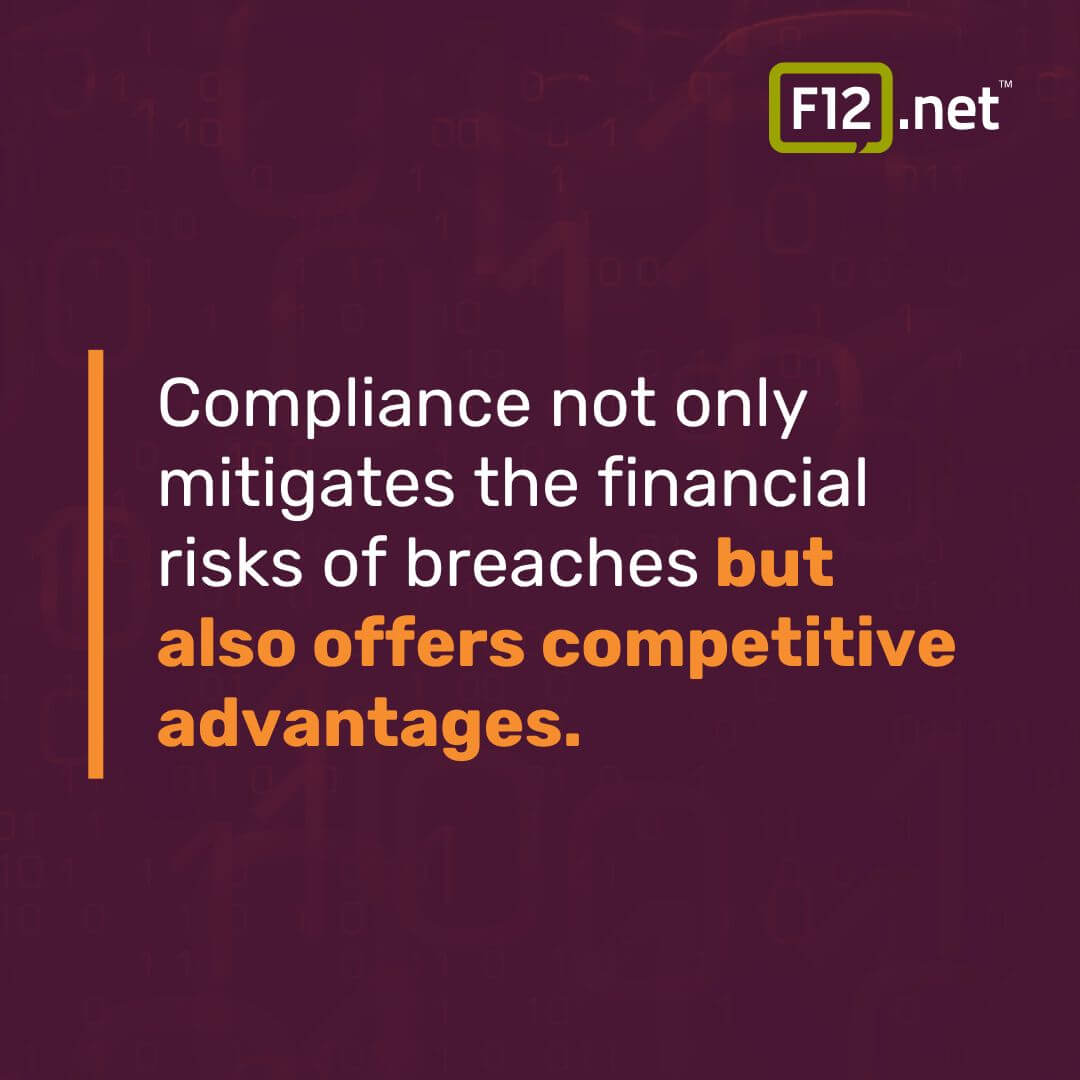Brief: This guide breaks down the steps Canadian companies need to take, from assessing your current security policies to becoming the proud holder of SOC 2 certification.
“A reputation once broken may possibly be repaired, but the world will always keep their eyes on the spot where the crack was.” – Joseph Hall
We live in a world where trust is everything.
Customers trust you with their personal information, businesses trust you with their data, and if that trust is broken, the fallout can be… well… brutal.
One cyber breach or data leak?
Years of reputation-building can come crashing down.
It’s not just the immediate financial hit.
Sure, data leaks cost money to fix, but the real damage is to your reputation.
Imagine this: your customers’ personal data—credit cards, passwords, even sensitive health info—gets leaked. You’re front-page news, but not in a good way. Now, every time someone Googles your company, they see headlines about your breach instead of your success stories.
And guess what?
81% of customers say they would stop engaging with a brand online after a data breach.

That means people will take their money elsewhere, and once trust is gone, it’s nearly impossible to win it back.
Now, you might be thinking, “It’s not going to happen to me.”
But breaches are happening to everyone, from small businesses to massive corporations.
Something as simple as an employee clicking the wrong link or using weak passwords can expose your entire operation.
That’s where the power of prevention comes in.
You don’t simply want to avoid damage—you want to show your customers and partners that their data is safe with you. Companies that invest in cybersecurity and data protection not only avoid these disasters, but they also build trust and become more attractive to potential customers.
SOC 2 compliance is a game-changer for Canadian businesses ready to build trust and gain a competitive edge.
Complying with SOC 2 can help you meet essential legal requirements and can enhance your reputation by showing customers you handle their data properly.
Curious about how to get started?
Jump in to learn how SOC 2 can be a key asset for your business in today’s data-driven world.
SOC 2 Compliance Overview for Canadian Companies
- SOC 2 boosts trust in business data handling.
- Key for legal frameworks and thriving in the market.
- Steps to begin the compliance journey.
Importance of SOC 2 in Canada
The importance of SOC 2 compliance for Canadian companies continues to grow as cybersecurity risks intensify. According to the latest Ponemon Institute report from 2023, the average cost of a data breach globally has risen to $4.45 million USD (approximately CAD 6 million).

In Canada specifically, the healthcare industry has seen some of the highest breach costs, with detection and escalation expenses becoming the most significant part of breach-related costs. These figures underscore the value of SOC 2 compliance as a framework for protecting sensitive data, aligning with the increasing financial risks companies face from breaches.
SOC 2 may not be a legal requirement in Canada, but its alignment with privacy regulations like PIPEDA enhances data protection and helps businesses build trust with stakeholders. Compliance not only mitigates the financial risks of breaches but also offers competitive advantages. As per a Tech Evaluate survey, 95% of businesses that adopted SOC 2 compliance reported positive impacts on their reputation.

Incorporating SOC 2 into business processes becomes increasingly critical for Canadian organizations, especially in sectors where data security is essential.
“SOC 2 compliance aligns with best practices and plays a crucial role in building trust, ensuring data security across borders, and offering a competitive edge for businesses in today’s interconnected digital landscape” (AuditBoard, 2024)
Steps to Start SOC 2 Compliance
Assess Current Security Policies
The journey to SOC 2 compliance starts with assessing current security measures. You need to identify gaps or vulnerabilities in existing policies. This involves a thorough evaluation of how your company collects, processes, and stores data. Looking into past incidents and understanding potential risks is crucial. Once you’ve assessed current security measures, decide which of the five trust service criteria your company needs to focus on.
Choosing the right SOC 2 framework is critical. Each service principle has specific controls to implement, meaning the framework should align with your business goals. Companies often choose the security principle as a baseline. Expand as you gain more confidence and meet more complex industry needs.
“By focusing on security from the ground up, organizations can confidently grow while managing risks proactively,” says Mary O’Brien, General Manager of IBM Security.
Identifying Key Stakeholders
Internal Teams Who Will Own the Process
The road to SOC 2 compliance requires a well-structured team. The internal team responsible should include IT personnel, compliance officers, and management. Their roles will involve overseeing the compliance project, coordinating with other departments, and ensuring ongoing adherence to SOC 2 standards. Effective communication among these individuals is key. They must work together to establish, document, and maintain security policies.
According to DQS Global’s guidance on compliance management, “Ensure everyone understands their role and responsibilities, fostering effective communication” is essential in compliance programs. This helps create clarity across all levels of the organization and ensures that everyone is aligned in fulfilling their duties toward compliance objectives.
Roles of External Consultants and Auditors
The expertise of external consultants can help bridge knowledge gaps in your internal teams. By leveraging their experience, businesses can identify blind spots and improve their compliance strategy. Consultants guide you on tailoring SOC 2 requirements to your specific business environment. When it’s time for an audit, engaging a certified SOC 2 auditor is essential. The auditor’s role is to review your control environment, validate its effectiveness, and produce the SOC 2 report.
According to the American Institute of CPAs, using an independent auditor ensures credibility and objectivity in reporting. Comprehensive audits can reveal compliance vulnerabilities before they become expensive issues.
Step-by-Step SOC 2 Audit Process for Canadian Companies
- Clarify the SOC 2 audit procedure for Canadian businesses.
- Break down key phases: preparation, execution, and follow-up.
- Explain the role and importance of SOC specifics in Canada.
Preparing for the Audit
Proper preparation is crucial for a smooth SOC 2 audit process. Let’s get into the key steps:
1. Map Out Data Flows and Create a Risk Assessment
Begin by mapping your company’s data flows. This involves tracking how data travels within your organization. Identify what data is collected, where it is stored, and who can access it. By laying this out, you’re highlighting any vulnerabilities along the flow of data.
Then, conduct a risk assessment. Identify potential threats to your data. Evaluate the possible impact of these threats. Rank risks in terms of their severity. This helps prioritize what areas need attention before the audit.
2. Document Security Measures and Internal Controls
Prepare detailed documentation of your company’s security measures. This includes firewalls, encryption methods, and any security software in use. It’s also pivotal to note any access controls—who has permissions to what data.
Next, document your internal controls. These controls are protocols or procedures like password policies, employee training programs, and incident response plans. This documentation serves as evidence of your company’s compliance efforts and helps auditors understand your security posture.
Undergoing the Audit
Once you’ve laid the groundwork, it’s time to dive into the audit itself. This is where you engage directly with a SOC 2 auditor.
1. Choose a Certified SOC 2 Auditor
Select an auditor who is certified for SOC 2 audits. Confirm their experience with companies similar to yours. This ensures that they understand your industry and any regulations specific to Canada. Ask for references and past audit reports to assess their expertise.
2. What to Expect During the Audit Visit
Expect the auditor to examine your prepared documents and conduct interviews. They will talk with your team to confirm the security measures you’ve described. They might also test some systems to ensure they’re functioning as documented. This visit is thorough; it covers all aspects of your data security practices.
Throughout the visit, the auditor may point out minor issues. Treat this as free advice—these insights can help strengthen your systems even before the final report.
Post-audit Actions
The audit isn’t over once the auditor leaves. It’s time to address findings and plan future steps.
1. Review the Audit Report and Implement Changes
Begin with reviewing the audit report comprehensively. It will detail what your company did well and where you can improve. Break down the findings into actionable tasks. Prioritize changes based on urgency and available resources.
Fix any identified weak spots immediately. This could mean bolstering security protocols or tightening access controls. Consider consulting with IT professionals if the fixes are complex.
2. How to Handle Discrepancies or Weak Points
If the report highlights significant discrepancies, devise a clear action plan. This might involve setting timelines for corrective measures or enhancing team training. Transparency is essential here—keep all stakeholders informed.
Maintain an open line with the auditor, too. They can offer advice on rectifying specific issues. Implement their input to strengthen your compliance posture for the future.
By following these steps diligently, Canadian companies can ensure a successful SOC 2 audit and uphold excellent data security practices.
3. SOC 2 Certification Benefits for Canadian Companies
- Builds trust and enhances reputation.
- Gives a competitive edge.
- Boosts efficiency by streamlining operations.
3.1 Enhanced Customer Trust
SOC 2 certification directly influences customer trust by proving a company’s commitment to data protection. In Canada, data breaches have become common, tarnishing the reputation of many businesses. By complying with SOC 2 standards, a company demonstrates its dedication to safeguarding customer data. This is not to be underestimated. Customers want assurance that their personal information is safe, and SOC 2 certification provides this. This certification is like a silent promise to clients that their data is in responsible hands, promoting a safer business relationship.
Moving beyond initial benefits, SOC 2 certification elevates a company’s market perception. In sectors like technology and finance, where data handling is crucial, being SOC 2 certified sets a firm apart from competitors. It’s like having an endorsement of reliability in data security, making clients more likely to choose a certified company over a non-certified one. Studies suggest that firms report increases in client acquisition after obtaining SOC 2 certification.
The book “Security Controls Evaluation, Testing, and Assessment Handbook” by Leighton Johnson goes into further detail about customer trust and security measures.
3.2 Competitive Advantage
SOC 2 certification serves as a stamp of assurance in the market. In a business climate where everyone claims to be secure, a SOC 2 certification sets a company above the rest. Many Canadian companies agree that it simplifies partnerships and builds trust, especially when data exchange is involved. Potential partners often look for this certification to mitigate their risks. The certification process ensures that a company not only has the controls in place but also operates them effectively.
Statistics show that companies with robust compliance in place can respond faster and more effectively to data incidents. This is a market where differentiation could be the key to landing new contracts. Companies that are SOC 2 certified are often first in line when clients are choosing between similar vendors.
For further reading on competing with compliance, consider “The Compliance Handbook: A Guide to Operationalizing Your Compliance Program” by Thomas Fox. This book delves deeper into competitive strategies through compliance.
3.3 Operational Efficiency
Achieving SOC 2 certification encourages a company to streamline its processes. The journey to certification involves optimizing operations, which often translate into increased efficiency. When controls are aligned with SOC 2 principles, businesses notice a reduction in unnecessary steps and find ways to automate tasks that enhance their service delivery.
Operational efficiency also extends to risk reduction. Implementing SOC 2 controls helps in recognizing potential vulnerabilities early. According to some reports, implementing these controls has helped Canadian companies reduce data breach risks by a significant margin.
The book “Operations Strategy” by Nigel Slack offers a more technical dive into optimizing business processes for quality and efficiency.
Implementing and maintaining compliance with these standards can require investments in technology and personnel. Although some businesses might be apprehensive about these costs, the long-term savings and risk reductions often far outweigh the initial expenses. However, some businesses believe that the return on investment may vary depending on the industry and client base.
F12’s comprehensive managed IT services streamline the SOC 2 compliance process by providing ongoing monitoring, system optimization, and security enhancements. Their solutions help companies reduce risks and improve efficiency by automating compliance-related tasks.
For a more up-to-date understanding of how operational efficiency is maintained through SOC 2, the CYBER AWARENESS Guide by CyberSapiens provides a solid resource.
SOC 2 certification offers these essential benefits, enhancing the capability of Canadian companies to build trust, outpace competition, and improve operations.
Understanding SOC 2 Security Principles
- SOC 2 hinges on five trust service criteria.
- Each principle corresponds to a key area of data practice.
- The Security principle is the foundation for all organizations but isn’t the only focus for many.
The Five SOC 2 Trust Service Criteria
SOC 2 revolves around five trust service criteria. These principles serve as the backbone of the framework, allowing organizations to dictate how they will secure and manage customer data.
Security: Protection of Information
Security is paramount. This principle ensures systems are safeguarded against unauthorized access. It involves measures like firewalls, intrusion detection systems, and access controls. This is not just a suggestion but a baseline requirement for every SOC 2 report. Security forms the backbone of any successful data protection strategy.
Availability: Accessible Systems for Operation
Availability ensures that systems are operational whenever they are needed. This principle addresses system uptime, disaster recovery, and incident response. Businesses must ensure that data and services remain uninterrupted. This goes hand-in-hand with the security principle. Together, they help build an organization’s trustworthiness in handling data.
Processing Integrity, Confidentiality, and Privacy
The SOC 2 Trust Services Criteria, including Processing Integrity, Confidentiality, and Privacy, play a crucial role in securing data and mitigating risks. Processing Integrity ensures that systems process data accurately and as intended, while Confidentiality focuses on protecting sensitive information from unauthorized access. Privacy governs how organizations collect, use, and share personal data, ensuring compliance with regulations like GDPR and CCPA.
Data breaches involving third-party vendors are a growing concern. According to a 2023 Prevalent study, 61% of companies experienced a third-party data breach or cybersecurity incident, underscoring the critical need for strong vendor management and security protocols. Implementing SOC 2 principles can help reduce the risks posed by third-party relationships, ensuring better data protection and compliance.
Real-World Application of Principles
The practical application of these principles translates directly into enhanced operational capabilities. Canadian businesses, dealing frequently with international clients, can leverage these criteria to align with existing frameworks like PIPEDA and even GDPR.
Applications for Canadian Businesses
For Canadian enterprises, adopting these principles isn’t just theoretical. It’s essential. SOC 2 compliance allows companies to engage confidently with clients worldwide, showing commitment to data protection. This is especially crucial in sectors like finance and healthcare, dealing with sensitive information.
Aligning with Industry Standards
Crafting a SOC 2 policy aligned with industry standards helps organizations meet various global regulations. The privacy and confidentiality criteria particularly lend themselves to laws like the General Data Protection Regulation (GDPR) and the California Consumer Privacy Act (CCPA). SOC 2 acts as a bridge, making compliance less cumbersome.
Arguments For and Against SOC 2 as Gold-Standard
While SOC 2 compliance is generally seen as a way to boost security and trust, some industry voices raise concerns about its effectiveness. Critics argue that its voluntary nature and flexibility can lead to check-the-box compliance, where companies meet the minimum standards without truly adopting robust security practices. In sectors like healthcare and finance, this can raise questions about whether SOC 2 is sufficient to meet stringent regulatory requirements, or if a more mandatory, regulated framework should be adopted instead.
However, supporters highlight that the flexibility of SOC 2 allows companies to adapt the controls to their specific operational needs, making it more feasible and practical for a variety of industries. This adaptability can encourage continuous improvement over time, as companies can scale their security efforts based on evolving risks.
In essence, the debate hinges on whether voluntary compliance leads to meaningful security improvements or if mandatory, more stringent guidelines are necessary.
Where To Go From Here
To dive deeper into SOC 2, consulting specialized forums and online communities can aid long-term compliance. Engage with platforms like ISACA and AICPA. They offer community insight and help keep you up-to-date with ongoing security best practices.
For those newly exploring SOC 2, the resources and perspectives discussed here are a stepping stone. The landscape of compliance evolves, and understanding these changes will be pivotal for Canadian companies keeping an edge in their data security approach.
Advanced Tips for Maintaining SOC 2 Compliance
- Continuous monitoring prevents compliance slip-ups.
- Avoid common mistakes like ignoring vendor risks.
- Stay relevant with updated security policies.
Additional Advice or Alternative Methods
Regularly updating your security policies isn’t optional. It’s a necessity. Cyber threats change fast, and your security policies should keep pace. Review and update these policies at least once a year. Consider small reviews quarterly to adjust for any regulatory or threat landscape changes. CISSP-certified professionals often suggest semi-annual reviews as best practice. Keeping your policies aligned with current threats helps you address new challenges head-on.
Use Technology for Continuous Monitoring
Using advanced tech for continuous monitoring helps maintain SOC 2 compliance. It gives you real-time updates on data activity. Machine learning tools can identify unusual patterns in data usage. This proactive approach minimizes security risks and reinforces compliance efforts. SOC monitoring tools like Splunk and LogRhythm are resourceful here.
However, these tools can be costly and need seasoned professionals to handle them. Evaluate the cost and benefit ratio before implementing. For comprehensive resources on using monitoring tools, Building a Better SOC by Binde, Burke, and Rogers is a worthwhile read. It delves into technical aspects and implementation challenges.
Common Pitfalls and How to Avoid Them
Falling short in employee training is a common mistake businesses make. Employees are often the first line of defense, yet their knowledge is sometimes lacking. Regular training is essential. It can be quarterly or bi-annual with refreshed content on emerging threats. Keeping employees informed mitigates the risk of breaches from human error.
Consider accessing SANS Security Awareness for training modules tailored to different levels of employees. Additionally, Security Awareness: Applying Practical Security in Your World by Mark Ciampa is a helpful book.
Ignoring Vendor Risks
Vendor risks are often overlooked but can lead to significant security vulnerabilities. Establishing a thorough vendor management process is crucial. This includes regular assessments of all vendors, focusing on their security posture and any changes over time. Demand transparency in their compliance efforts.
F12’s Vendor Risk Management solutions ensure that your business maintains compliance by offering thorough third-party assessments and ongoing monitoring, which aligns with the SOC 2 framework’s requirements for managing vendor relationships effectively.
Conduct Frequent Mock Audits
Conducting mock audits prepares internal teams for the real SOC 2 audit. Mock audits simulate the actual audit experience. They’ll highlight weaknesses in current systems and processes before the actual audit occurs. This proactive step ensures you’re not caught off-guard.
Mock audits can sometimes be costly, so budget for them accordingly. That said, they often highlight significant issues early, which might save on penalties or costly adjustments post-audit. The book Information Security Policies, Procedures, and Standards: Guidelines for Effective Information Security Management by Thomas R. Peltier discusses how to set up and carry out mock audits.
Integrate SOC 2 with Other Compliance Requirements
SOC 2 should not stand alone as your only compliance effort. It often overlaps with other compliance requirements like GDPR or PIPEDA. Integrating these can streamline processes and present a holistic approach to compliance.
Aligning SOC 2 requirements with other global standards is challenging but feasible. Manual checks are essential during integration. Ensure there are no conflicts. For further reading, “EU General Data Protection Regulation (GDPR) – An Implementation and Compliance Guide” provides insight into managing compliance across different laws. This resource will aid in identifying similarities and gaps across compliance frameworks.
Continuous Improvement Culture
Fostering a culture of continuous improvement secures long-term SOC 2 compliance. Encourage openness around security practices and compliance goals. Engage all employees in the process, making SOC 2 compliance a shared responsibility.Leaders in cybersecurity recommend open communication channels and frequent feedback loops. This allows issues to be addressed promptly, ensuring a robust compliance posture. Lean into books like “The Culture Code: The Secrets of Highly Successful Groups” by Daniel Coyle, which offers tactics to cultivate such a culture.
“Courageous Cultures” by Karin Hurt and David Dye further emphasizes the importance of creating an environment where employees feel empowered to share ideas and solve problems, a critical aspect of compliance efforts.
Similarly, “The Insider’s Guide to Culture Change” by Siobhan McHale offers guidance on breaking through entrenched patterns to build a culture that prioritizes accountability and continuous improvement.
Additionally, recognizing and rewarding compliance efforts reinforces these values across the organization. Leaders should acknowledge teams who exemplify the company’s commitment to compliance, further encouraging this culture.
Troubleshooting Common Issues
- Quick fixes for failed audits.
- Steps to manage unexpected data breaches.
- Practical solutions save time and stress.
Solutions to Potential Problems
Proactive solutions help prevent issues from getting bigger. They also reduce anxiety for those managing compliance.
Addressing Failed Audits
- Understand the Findings
Go through the audit report carefully. Focus on each failed area. Some problems could be due to incomplete documentation or misunderstood controls.- Use a checklist to ensure all requirements are met.
- Cross-check with trust service criteria to see where you slipped.
- Consult Internal Teams
Gather your compliance team, IT staff, and key stakeholders. A team-based approach helps to see the problem from different angles.- Discuss findings openly to avoid blame.
- Emphasize possible improvements and root causes.
- Develop a Rapid Action Plan
Create a timeline to address each finding. Quickly implementing changes shows commitment to compliance.- Assign tasks with clear deadlines.
- Ensure regular updates on progress are communicated to involved parties.
- Engage External Auditors and Consultants
Consulting an external expert might be necessary. They provide an unbiased view of what went wrong.- Have them review your action plan for any missed areas.
- Get a pre-audit check from consultants once changes are in place.
Handling Unexpected Data Breaches
- Immediate Containment
Act fast to isolate affected systems. This limits the damage.- Shut down compromised network segments immediately.
- Activate incident response plans without delay.
- Assess Impact and Gather Evidence
Understand what information was accessed and by whom. Collect logs and evidence for further analysis.- Check databases, logs, and network traffic for clues.
- Maintain a detailed record of all actions taken.
- Notify Affected Parties
Transparency is vital. Inform stakeholders and any affected customers promptly.- Follow legal guidelines for breach notifications.
- Provide clear instructions on next steps for users.
- Engage Professional Cybersecurity Help
When in doubt, get expert help. Cybersecurity professionals can identify blind spots.- Have them conduct a thorough forensic investigation.
- Update security systems and protocols based on findings.
- Review and Revise Security Protocols
After resolving a breach, don’t relax. Update policies and improve defenses.- Train staff on updated security measures.
- Conduct regular vulnerability assessments.
Further Resources and Reading
- Latest trends and integration with other standards drive deeper understanding of SOC 2.
- SOC 2 propels business growth and offers long-lasting advantages for Canadian companies.
SOC 2 Compliance Related Topics or Advanced Guides
Tracking the latest trends in SOC 2 compliance helps in staying updated with changes. This might include how technology is influencing security measures or new challenges in maintaining compliance. Automation tools and machine learning can impact efficient audit processes Mordor Intelligence. Keeping an eye on these changes can be essential for compliance teams.
In addition, integrating SOC 2 with other standards enhances a well-rounded security posture. For Canadian companies, integration with local standards like PIPEDA can streamline compliance efforts. Resources on how to align SOC 2 with international standards like GDPR can provide guidance on holistic compliance strategies. Websites like ISACA and security forums offer manuals tailored to these integrations.
Latest Trends in SOC 2 Compliance
Staying updated with trends can significantly affect an organization’s compliance strategy. With the rise of remote work, companies face new security challenges and opportunities. Trends also show a shift towards continuous auditing rather than traditional periodic audits (Deloitte). Continuous auditing allows issues to be identified and addressed in real-time, making compliance a dynamic process.
Guides on Integrating SOC 2 with Other Standards
Integrating SOC 2 with standards like ISO 27001 or GDPR can simplify overall compliance. It minimizes redundant audits and ensures a more comprehensive security protocol. Detailed guides, such as those by the Cloud Security Alliance, explain how SOC 2 aligns with these global standards. For Canadian companies, syncing with PIPEDA regulations can prevent data breaches and avoid legal complications.
Why SOC 2 Compliance Matters
SOC 2 compliance is more than just a checkbox exercise; it links directly to business growth. Markets are becoming more competitive, and having SOC 2 compliance can set a company apart. Clients and partners often require security assurance, and SOC 2 provides that Ponemon Institute. When it comes to gaining trust, SOC 2 enhances credibility.
The benefits extend beyond immediate business needs. For Canadian companies, SOC 2 compliance can be an investment in reputation and reliability. Demonstrating strong data protection measures to stakeholders can build long-term trust. In doing so, companies boost customer loyalty and attract new partnerships, setting a strong competitive groundwork in an increasingly data-aware world.
Connection between SOC 2 and Business Growth
When a company commits to SOC 2, it usually sees an improvement in customer trust. This can lead to more business opportunities. Market surveys often indicate a preference for companies with proven security measures in place. It’s not uncommon for clients to view SOC 2 compliance as a key factor in their decision-making (McKinsey & Company).
Long-term Benefits for Canadian Companies
Long-term, SOC 2 offers more than just compliance. It helps in staying ahead in a transitioning regulatory landscape. In Canada, as privacy laws evolve, SOC 2 frameworks can be adapted, keeping businesses compliant across borders. Consistent adherence not only prevents regulatory fines but also enhances operational efficiency through refined processes and risk management.
Why SOC 2 Compliance is Your Next Step Forward
Understanding SOC 2 compliance can help Canadian companies enhance trust, gain a competitive edge, and boost efficiency. Following the outlined steps ensures a smooth path to successful audits. With these insights, your business can strengthen its standing while safeguarding customer data.
Evaluate your current security measures and align them with a fitting SOC 2 framework. Rally the right internal teams and consult with external experts to guide the process. Prioritize regular updates to your security policies and make employee training a key focus. Consider potential vendor risks too.
Is your company ready to transform compliance into an advantage? Every step counts.




